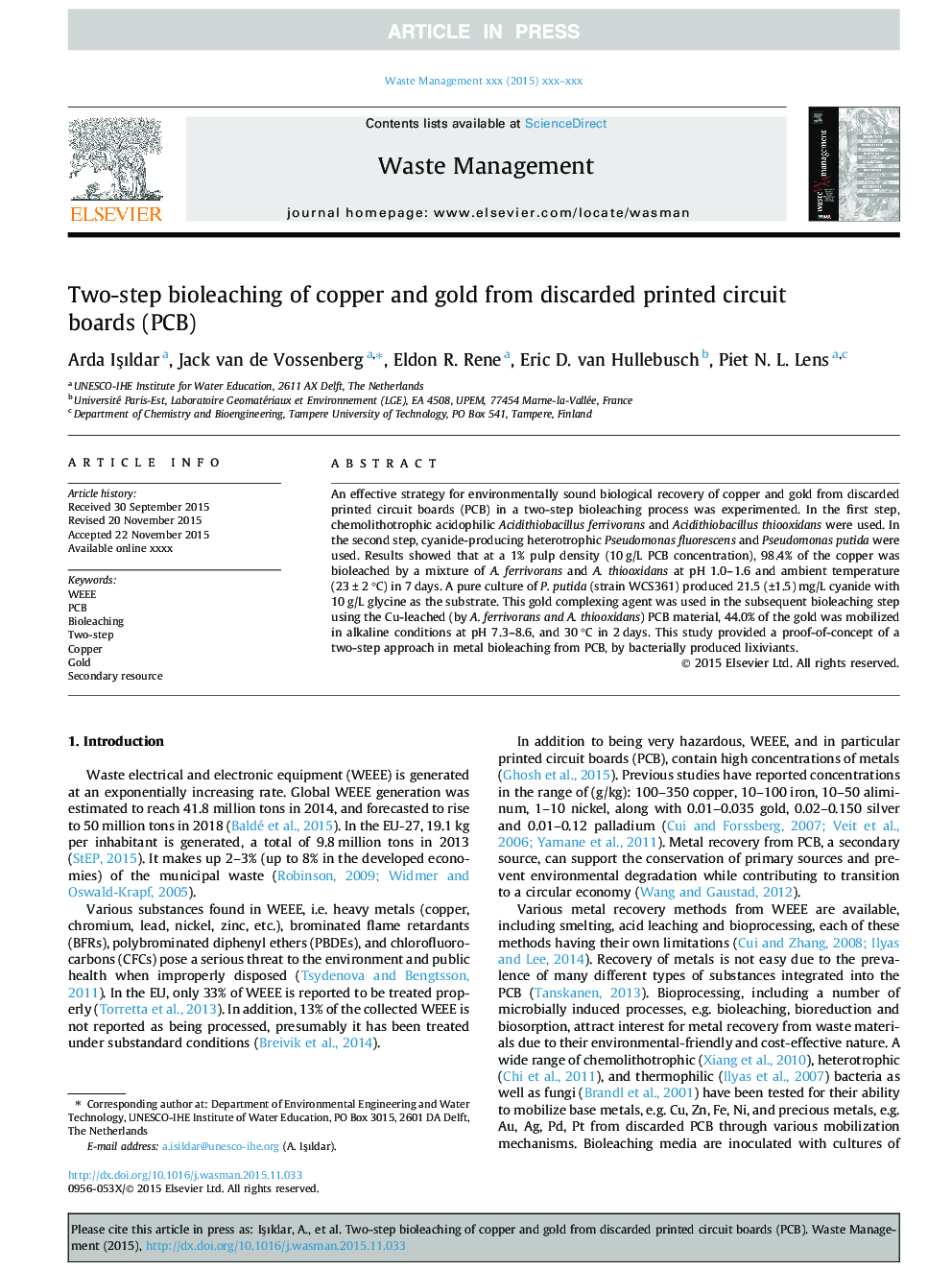| Article ID | Journal | Published Year | Pages | File Type |
|---|---|---|---|---|
| 5757164 | Waste Management | 2016 | 9 Pages |
Abstract
An effective strategy for environmentally sound biological recovery of copper and gold from discarded printed circuit boards (PCB) in a two-step bioleaching process was experimented. In the first step, chemolithotrophic acidophilic Acidithiobacillus ferrivorans and Acidithiobacillus thiooxidans were used. In the second step, cyanide-producing heterotrophic Pseudomonas fluorescens and Pseudomonas putida were used. Results showed that at a 1% pulp density (10 g/L PCB concentration), 98.4% of the copper was bioleached by a mixture of A. ferrivorans and A. thiooxidans at pH 1.0-1.6 and ambient temperature (23 ± 2 °C) in 7 days. A pure culture of P. putida (strain WCS361) produced 21.5 (±1.5) mg/L cyanide with 10 g/L glycine as the substrate. This gold complexing agent was used in the subsequent bioleaching step using the Cu-leached (by A. ferrivorans and A. thiooxidans) PCB material, 44.0% of the gold was mobilized in alkaline conditions at pH 7.3-8.6, and 30 °C in 2 days. This study provided a proof-of-concept of a two-step approach in metal bioleaching from PCB, by bacterially produced lixiviants.
Related Topics
Physical Sciences and Engineering
Earth and Planetary Sciences
Geotechnical Engineering and Engineering Geology
Authors
Arda IÅıldar, Jack van de Vossenberg, Eldon R. Rene, Eric D. van Hullebusch, Piet N.L. Lens,
